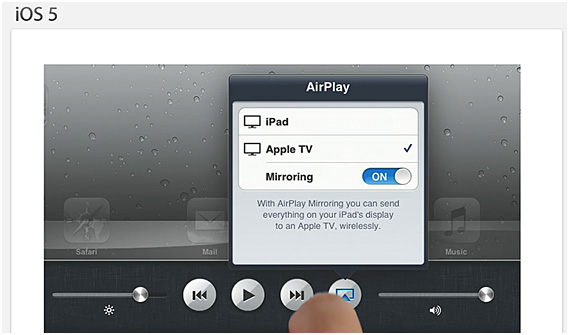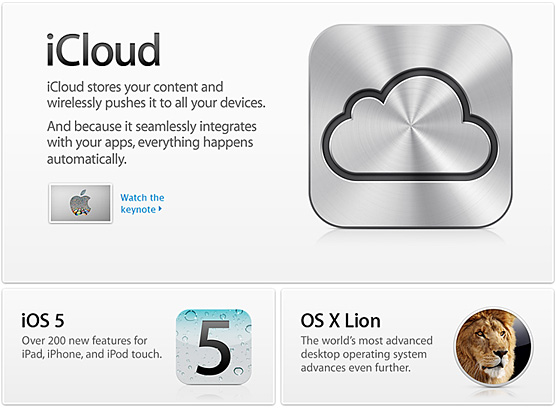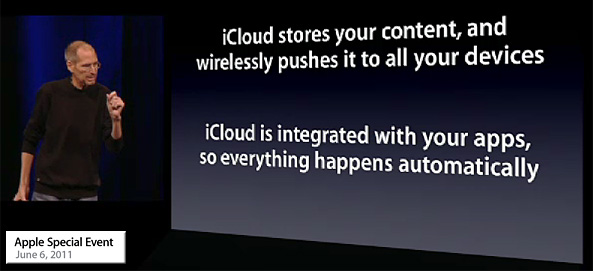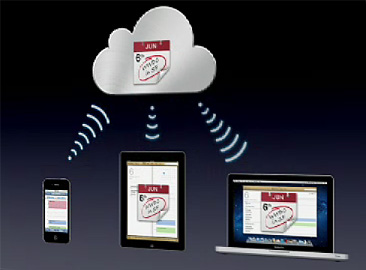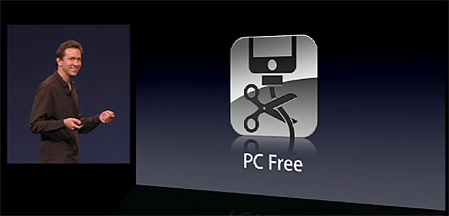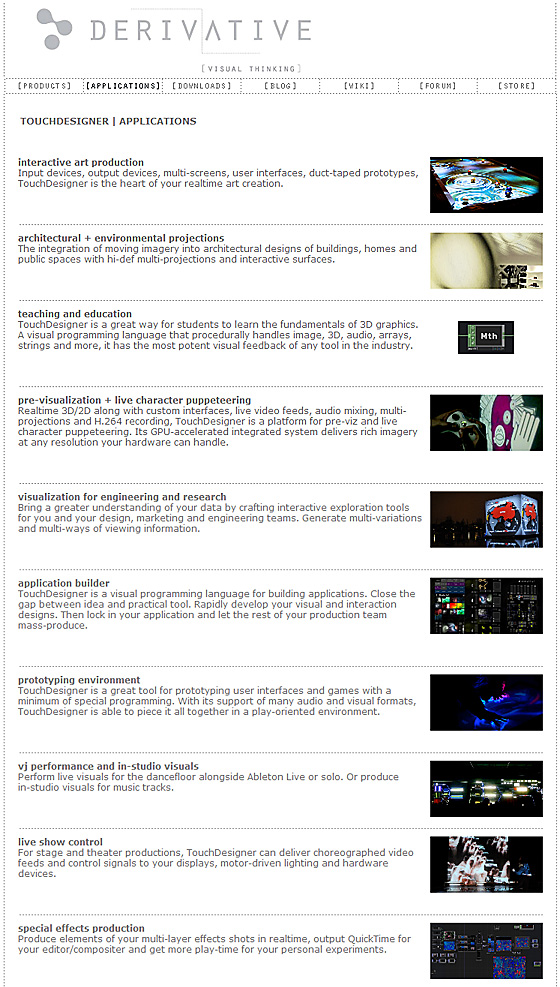Apple’s new video regarding their iOS 5 operating system
From DSC:
I have it that these technologies will be used for educationally-related purposes/materials as well; including digital storytelling, transmedia storytelling, transmedia-based interactive/participative educational materials and more.
The Personal Cloud Will Be A $12 Billion Industry in 2016 — from ReadWriteWeb by Dan Rowinski
Excerpt:
P[ersonal] Cloud As The Third Major Client Software
Forrester says that the cloud will be the third major client software battleground. The PC operating system was the first, won early by Microsoft with niches carved out for Apple and Linux. Mobile is the second and remains fluid and volatile with Google’s Android leading in market share with Apple, Research in Motion and Microsoft figuring out how to gain ground. The personal cloud will be the third and will be built on top of the first two. Hence, the companies with strong infrastructure in operating systems and communications will be the leaders in the personal cloud as well.
Forrester sees the personal cloud as a disruptive force to the current online services market. It says to “prepare for major opportunity and turbulence selling to individuals.” That means marketers should explore the personal cloud as a new channel to reach eyeballs. IT managers should plan for personal cloud integration as consumers continue to want information stored in personal services at work and the major email providers should create a better experience to capture users from any email address in the company’s personal cloud net.
Apple unveils iMessage, its BBM competitor, at WWDC — from engadget.com by Jacob Schulman
OS X Lion launching in July for $29.99 — from engadget.com by Donald Melanson
Apple’s iOS 5: all the details — from engadget.com by Vlad Savov
iCloud unveiled at WWDC, free for all 9 cloud apps, MobileMe RIP — from engadget.com by Joseph L. Flatley
Apple announces iTunes in the Cloud, iTunes Match — from engadget.com by Donald Melanson
Steve Jobs helps announce iCloud, new software — from theglobeandmail.com by Marcus Wohlsen,Michael Liedtke
Apple iCloud: Everything you need to know — from digitaltrends.com by Kelly Montgomery
From DSC:
I’m seeing folks take pot shots at Sony and others re: their recent security breaches. I don’t find this type of thing funny at all, nor do I approach this type of subject in a light-hearted manner. To me, this is not a joke. I’d like to write more on this subject, but I don’t know enough to combat the hackers who might turn their ill-will towards this site/blog.
I support those people, organizations, and governments who are cracking down on these hackers — as national/economic/personal security rely on these attackers doing a U-turn (or to repent, in Biblical terms). Instead of these attackers using their knowledge, skills, and abilities towards doing what’s harmful to society, they need to do what’s right and helpful to our world! Build up, not tear down.
Addendum on 6/10/11:
Excerpt from Spanish Police Arrest Sony PSN Hacktivists, But It Won’t Stop The Attacks: Expert — from FastCompany.com by Kit Eaton
Sony has had to spend close to $200 million to repair and defend its networks after a spate of attacks…
From DSC:
…and guess who pays for that $200 million? Sony’s current and future customers — as these costs will be rolled into Sony’s future pricing for their products & services. The consumer gets nailed again; thanks to the thievery of some bad apples.
33 essential resources for developers & designers — from Mashable.com by Brian Anthony Hernandez
For months now, web developers and designers have flocked to Mashable to learn from and share our how-to guides, analyses, videos, lists, videos and galleries. Below, we’ve assembled 33 of our favorite resources since January and separated them into three easily digestible lists: inspiration, design and development. To keep up to date with news and resources about the topics listed below, feel free to follow Mashable‘s dev & design channel on Twitter…
4 free e-books on learning Objective-C, the programming language of iOS and OSX — from readwriteweb by Klint Finley
How HTML5 is influencing web app development — from Mashable.com by Christina Warren
Berners-Lee calls for higher purpose of Web — from cnet.com by Martin LaMonica
CAMBRIDGE, Mass.–Tim Berners-Lee, who invented the underpinnings of the World Wide Web, isn’t just concerned about getting browsers on more mobile devices. Architects of the Web need to consider how it will affect all humanity as it evolves.
…
But even as engineers hammer out the next version of HTML, they have a duty to fulfill a weighty social purpose of the Web, he said. As the way that people connect in society, the Web supports justice, government transparency, and human rights to freedom, he said.
Adobe Creative Suite 5.5 for education — from Adobe.com
Adobe Creative Suite 5.5 boosts HTML5 and mobile development — from The Journal by David Nagel
Adobe also said it will be making changes to Creative Suite development cycle. Adobe is gearing up to release an update to Creative Suite, its flagship development environment and digital media production package. The upcoming version 5.5 release, due out within a month, incorporates new features for creating HTML5 applications and apps developed specifically for tablets.
Adobe takes on mobile world with Creative Suite 5.5 — from webmonkey.com by Scott Gilbertson
You can rent Photoshop and other Adobe software — from Digital Inspiration
Text-to-Speech Functionality in [Adobe] Captivate — from Integrated Learning Services by Dean Hawkinson
Adobe connects tablets to Photoshop with new Photoshop Touch SDK — from arstechnica.com by Chris Foresman
Computer science programs use mobile apps to make coursework relevant — from The Washington Post by Jenna Johnson
Computer science courses use mobile apps to make coursework relevant — from The Washington Post
The Virginia Tech student’s concern about buses, Tilevich said, offered a chance to show students that coding can be relevant. By the end of the semester, the advanced software engineering class had partnered with the city transit system to obtain data from Global Positioning System devices on dozens of city buses. An algorithm soon was predicting arrival times and beaming the information to a prototype mobile application.
“Sometimes as faculty members, we have to step back. We have to let them run wild,” said Tilevich, a former professional clarinet player who blogs about his teaching experiments.
Originally saw this at GetIdeas.org










